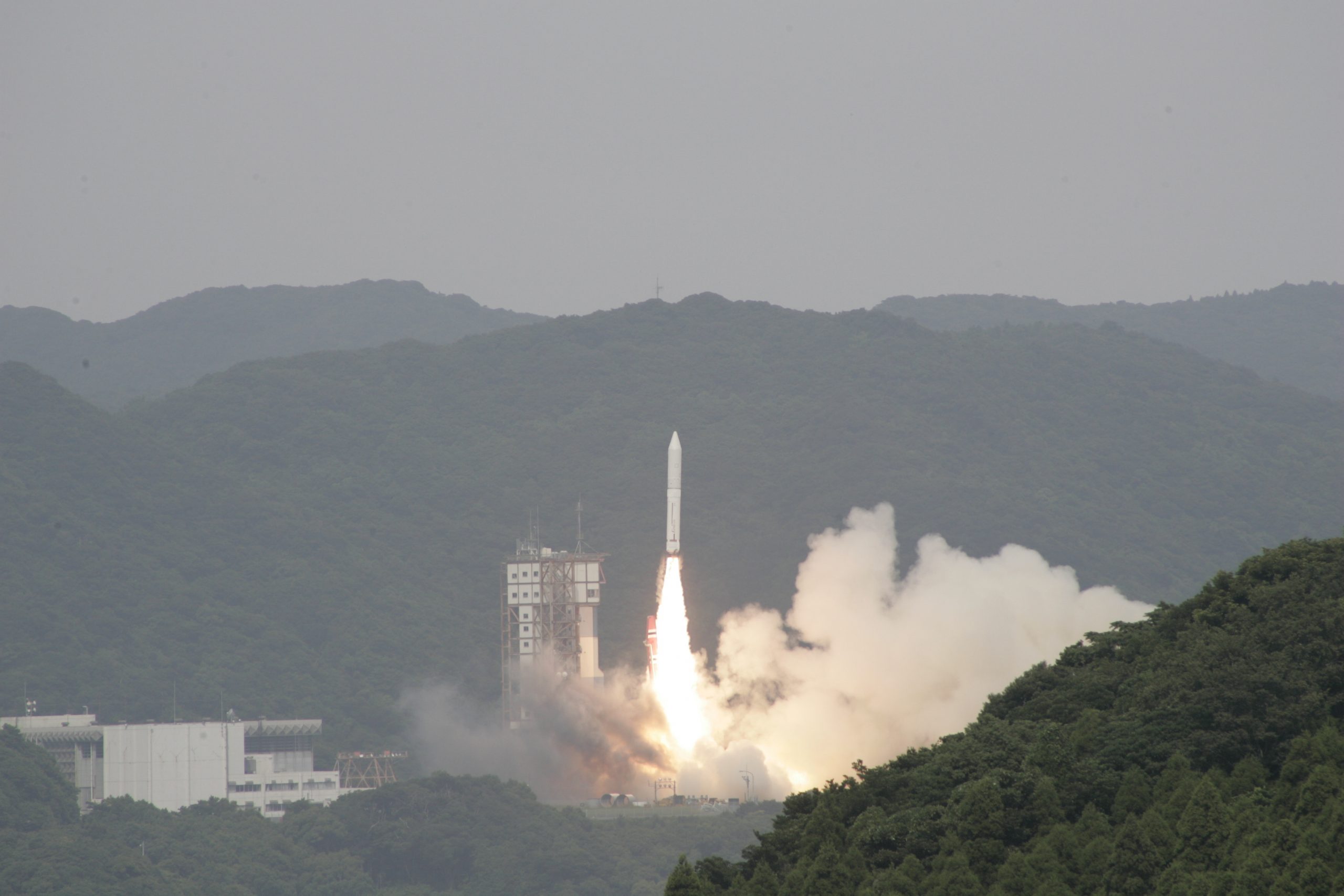
The rocket you can launch from your laptop
At 8pm on 20 December 2016, a rocket blasted upwards from the Uchinoura Space Center. It carried Arase; a satellite destined to explore the bands of radiation that wrap around the Earth. While Arase’s scientific program was eagerly anticipated, the satellite was not the only important feature of the launch.
Arase was travelling on an Epsilon rocket; JAXA’s newest class of launch vehicle for medium-sized missions heading for an Earth orbit. This was the second launch with Epsilon, an earlier version of which had taken the Hisaki satellite into orbit in 2013.
With the Epsilon project, JAXA is aiming to significantly lower both the cost and preparation time needed for a rocket launch. It is an essential shift if space travel is to meet the demands from an increasing broader audience within industry and the private sector. Scientists too are eager for change, since fast and regular launches would significantly reduce the time needed to complete smaller missions.
A traditional rocket launch is an involved affair, requiring a large team of people to be based at the launch centre for several months as the rocket is assembled. The launch itself sees a packed control room as a multitude of checks are carried out, including hands-on adjustments that require hooking-up cabling between the rocket and the ground equipment. It is a system that has seen little adjustment since the Apollo era of the 1960s, and where outdated technology is retained due to its reliability. While the latter is understandable, progress requires change.
The ultimate goal of Epsilon is to reduce the preparation time to just nine days and replace the control room with a single laptop (two for redundancy) that can be operated anywhere in the world. This is being achieved by utilising available materials and techniques from areas outside space science.

One half of the Epsilon fairing.
One example that had been implemented is the payload fairing on the Epsilon; the top of the rocket that encloses and protects the spacecraft during launch. The fairing’s nose cone is made from general purpose industrial silicon. Such materials already in use in industry often surpass custom-made parts in cost, weight and size. The fairing itself is also manufactured in just two pieces, each consisting of a half-cone and cylinder shape. The smaller number of parts greatly simplifies the assembly, reducing both the labour and time required.
The launch process is being modernised to make use of advances in artificial intelligence. Epsilon’s new Responsive Operation Support Equipment (ROSE) gathers data from the rocket’s onboard electronics, performing the final tasks that are normally undertaken by the control room team. The results can then be transmitted through a high speed network to a computer anywhere in the world. Such automation lowers cost, increases speed and reduces human error, as well as making the launch of Epsilon far more accessible by removing the need for a large team. Similar automated tests have been trusted for a while in many high risk areas such as car airbags and in medical diagnosis. The new combined system is known as Epsilon’s Mobile Launch Control. At present, a full team of personnel still assist with the Epsilon launch, but the ultimate aim is for ROSE to reduce this to a fraction of the current size.
In keeping with cost and convenience, Epsilon uses solid (Hydroxyl-terminated polybutadiene: HTPB) propellent. Solid fuel is easier to store and handle than liquid fuel, being considerably denser, less toxic and less reactive. The disadvantage is that the rocket’s thrust is more difficult to control during launch since the burn cannot be stopped once it has begun. This potentially risks the rocket rapidly accelerating as it lightens due to the fuel being consumed, destroying its payload in the increased air resistance before exiting the atmosphere.
To control rocket thrust, Epsilon uses a three-stage rocket with each section burning successively to provide different degrees of power. The first two stages can both control the altitude and direction of the rocket, while the third stage is designed to spin the rocket in order to stabilise its flight path. Any final errors are corrected by optional small liquid hydrazine thrusters. The accuracy of Epsilon’s flight path was tested during the first launch with Hisaki which showed excellent precision.

An Epsilon launch will one day need just a small team and two laptops.
Solid rocket propellent also risk subjecting their payload to high vibrations during the first stage of the launch. A major source is the hot escaping gases, which has been tackled by the new design of the the Uchinoura Space Centre launch pad. Raised by about 12m, the exhaust flow from the rocket is deflected by 90 degrees. Additionally, Epsilon is equipped with a payload attachment fitting (PAF) that quenches the high frequency vibrations around the fairing.
Epsilon is JAXA’s third generation of solid fuel rockets. It replaces the M-V class that was retired in 2006. The M-V has an extensive record of successful launches, but cost and preparation time made the advantages over the larger liquid fuel rocket minimal.
Development for the Epsilon rocket is ongoing, with significant changes between the first flight in 2013 and the Enhanced Epsilon flight in 2016. The rocket has a length of 26m and diameter of 2.6m, with a total lift-off mass of 95.1 ton. To deliver a satellite into low Earth orbit (LEO: 250 – 500km), Epsilon can carry a 1.2 ton payload and a 550kg payload to the higher (500km) Sun synchronous orbit (SSO). The ultimate aim is to get the Epsilon launch cost below 3 billion yen. At present, it is slightly higher at around 3.8 billion yen, but still approximately 50% cheaper than the M-V rocket. Ultimately, it is hoped that Epsilon will launch every year, alternating between science-led and engineering-led projects.
New plans for the future of Epsilon include extending the mobile launch control to autonomously track and perform any necessary safety operations while in flight. Improved solid fuel is also a key research target. Current solid rocket propellent cannot be brought back to a pliable liquid state once it has set. It therefore needs to be mixed swiftly and in a single batch (or parallel batches) for the rocket motor case. An improved fuel would be easily re-melted and set, allowing it to be made in smaller quantities over a longer period of time.
These goals take the Epsilon rocket closer to departing from a launch centre with the frequent flight listings of an airport.
—
More information about Epsilon on the ISAS website.
 Previous Post
Previous Post Next Post
Next Post






